Beryl Rowe was Rhonnie’s mother, so the family name was well known and some history of the grandmothers held in the oral record archive.
In old English the meaning for this family name is probably simply that of people who lived in houses in a row or next to a hedge-row; it is also the English patronymic for the French Roul. Importantly, in 1891, 30% of the families with this name lived in Devon and Cornwall, south-western England.
CORNISH FARMERS AND LEAD MINERS
Our Rowe story begins in Cornwall, which lies across the end of the south-western peninsular of England. In the mid 19th Century the local tin and lead mining that had maintained the Cornish economy for many years had declined significantly and many miners became unemployed. This, and the attraction of the gold discoveries in America and Australia, started a mass exodus of Cornish miners to these foreign parts.
Richard Rowe, b1789 had married Mary Skinner b1796 and they lived at Menhenoit in the district of Kineard, Cornwall, England. Richard and Mary were both involved in agricultural labouring, working for a local farmer and land owner. Richard was most likely the son of Samuel Rowe b1765, who was also an agricultural labourer. Richard and Mary had at least four children that can be identified and they were Elizabeth b1816, Samuel b1819, William b1823 and Mary b1838. Richard died in 1829 and our family line will continue through his eldest son Samuel.
Richard and Mary’s eldest son Samuel became a lead miner, probably when he was around 10 years old. Cornwall, and the surrounding counties of Somerset and Devon, were important to the industrial revolution through their mineral resources of tin, lead, copper and coal. By 1851, when he was 32 years old Samuel was still lead mining but had married in 1848, Amelia Philp b1824. Samuel and Amelia lived at Menhenoit until they decided, around 1853, to emmigrate to Australia. Amelia was then pregnant with their first son, Eli Samuel b1854, when Samuel set sail for Australia, on his own, in 1853. Samuel sailed to Australia, via New York, arriving in Melbourne, Victoria in November 1853 aboard the SS American. Amelia followed him, with Eli, four years later, arriving in Melbourne in 1857 on the SS Mindora from Plymouth.
GOLD MINING TO FARMING AT WALMER, COLONY OF VICTORIA
Given his background in mining you would expect Samuel to have taken up gold digging on his arrival in 1853 and he probably did and was also possibly successful, enough anyway to have acquired a land selection, because by 1886, at his death from a heart attack whilst out rabbit shooting, Samuel had become a well-known farmer at Walmer near Maldon, Victoria, with his death at 68 years being reported in the local Maldon newspaper. Walmer was proclaimed a town in 1859 and was on the edge of the deep leads gold mining area being 10km north of Castlemaine. In 1891 Walmer only had a population of 40 people but had an active population of deep lead miners in the 1860’s. A ‘deep-lead’ is basically where the miners dig down into the quartz carrying gold veins and end up many metres below ground.
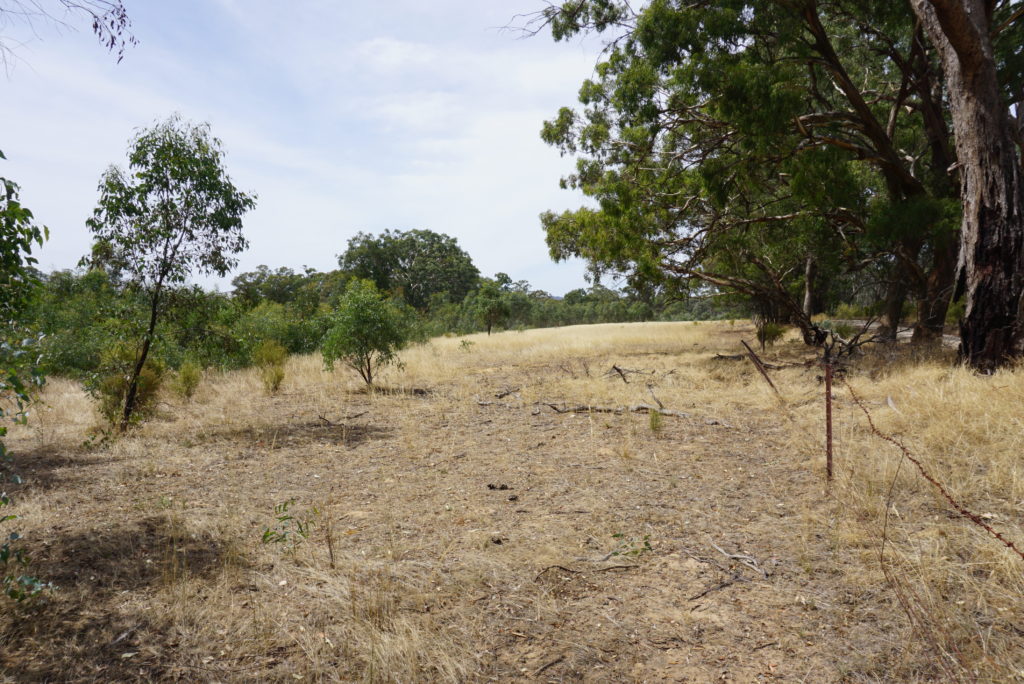
Rowe land at Walmer 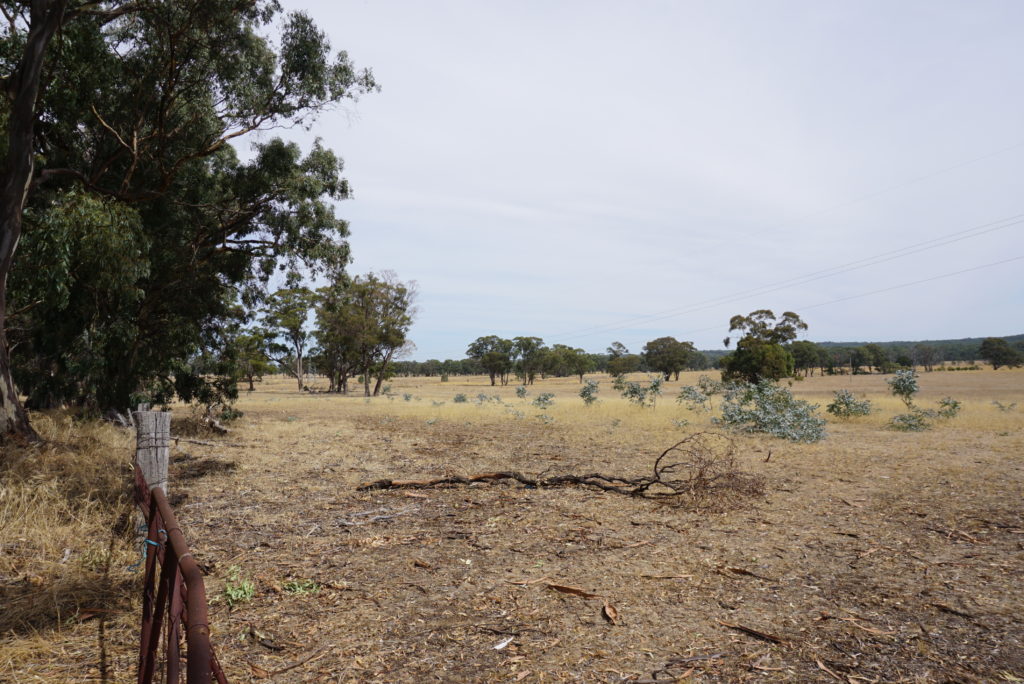
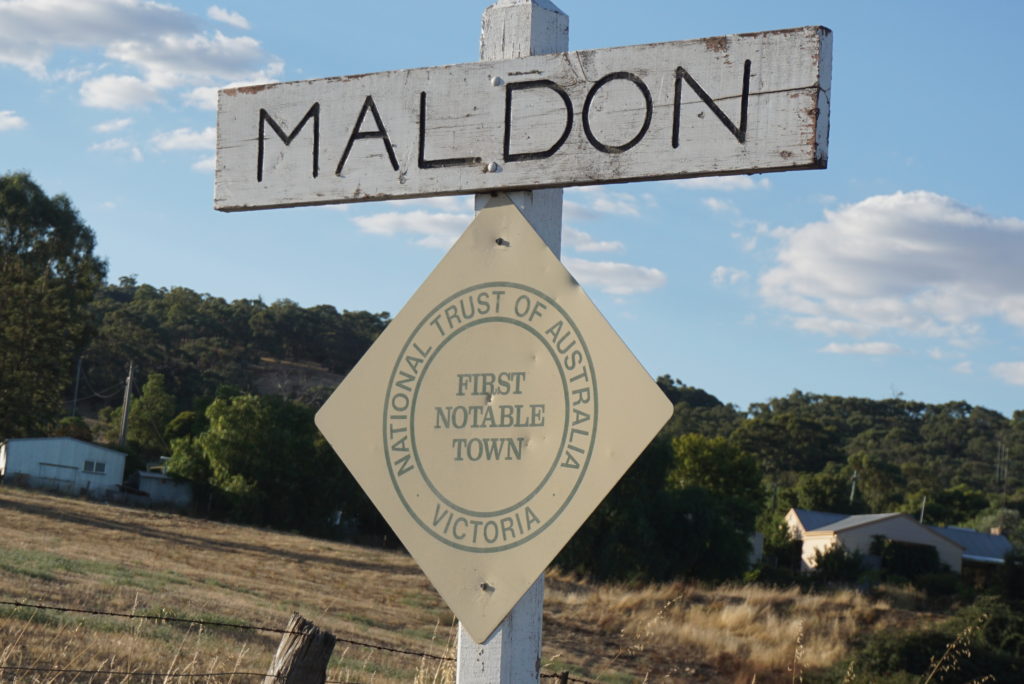
It seems that Samuel and Amelia had progressed, probably as miners first and then as farmers. They had five children, all born at Walmer except the eldest Eli. Their children were Eli Samuel b1854 in Cornwall, Jessie b1859, Mary b1860, who died at 3 years, William b1862 and Mary b 1863. Our family line in Australia will continue through youngest son William but first a little about the other children.
Eli married Catherine Mackie b1855, from Prahran, Melbourne, and they had eight children; Samuel E b1878 (d1930), Arthur b1880, Janet b1881, Amelia b1882, Grace b1884, Jessie M b1887, Winifred C b1889 and Alfred H b1891. All the children, except Winifred and Alfred, were born at Maldon, with the others being born around Trentham. Eli died in 1942 and Catherine in 1922. We don’t know what Eli’s occupation was, but the Rowe family became well established in the Maldon area for the decades to the present day. He probably followed his father into mining early on but after that probably into farming; who knows. Maldon, like Walmer, was an important gold mining town on the deep leads field and had a peak population, including miners, of about 9000 people in the mid 1860’s but rapidly reduced, after exhaustion of the gold leads, to be about 1500 by 1891
Eli’s sister Jessie married (1890) Jules Gasgard b1861 from Gordon, east of Ballarat, Victoria and they had two children, Amelia J b1891 and Jules S b1895; both children were born at Maldon. Jessie died in 1931 and Jules senior in 1934, both at Essendon. Jules was born in Australia of a French father.
Youngest daughter Mary b1863 married Richard Grigg b1858 of Adelaide in 1888. This couple had eight children, who were; Grace b1889, Clarence b1890, Hilda b1892, Alwyn and Bessy, twins, b1895, Bessy died at birth, Charles b1898, Robert b1899 and William 1902. All the children were born at Maldon. Mary died in 1918 and Richard in 1912, both at Maldon.

Son William Rowe, our family ancestor, was born in 1862 at Maldon and married Margaret Holden b1864 at Derby in 1885. Margaret was born at Indented Head, Geelong and was the daughter of James Holden b1838, from County Antrim, Ireland and Mary Pollock b1843, from Scotland.
GOLD SEEKING TO RAILWAY CONSTRUCTION
Back to our ancestors. William and Margaret Rowe had ten children. They were Amelia Mary b1886, David James b1888, William b1890, Margaret E b1892, George Forrest b1894, Jessie W b1896, Samuel b1898, Grace b1900, Charles S b1903 and Eva R b1905. All the children, except Eva the youngest, were born at Inglewood or other townships in the Loddon Valley, north of Sandhurst (became Bendigo), where William may have been working on the railway, probably as a line or plate layer. Inglewood was a major gold mining town in the 1860’s, with a population of over 40,000 persons. William and Margaret had probably tried their had at mining on the goldfields between Maldon and Inglewood. These Inglewood fields were quickly exhausted and by 1880 construction of the railways had commenced and reached Inglewood. By 1890 the line had extended well out into the Loddon Valley and beyond. Labouring teams on the railway were well paid and had secure employment. William and family would have moved to where the railway work was, probably living in temporary or canvass dwellings.
A MOVE TO MELBOURNE
In the mid to late 1890’s a significant economic downturn occurred, followed by depression, with a major capital shortfall that saw most rail work stopped. We don’t know what William and Margaret did during this period but at some point, around 1904, William managed to obtain work on the growing Melbourne rail network, as in that year youngest daughter Eva is born at Clifton Hill, inner Melbourne, where they were living. The couple then moved to North Fitzroy around 1909, with daughters Amelia and Margaret and son David, all single, and still living with their parents. William was still working for the railways in 1919 and retired in 1924, when they moved to East Brunswick. Margaret died in 1926 and William in 1946, both at East Brunswick. Our family line will continue through their son George Forrest Rowe, but first a brief look at the stories of his siblings.
William and Margaret’s eldest daughter Amelia continued to live in North Fitzroy, with her parents and sister Margaret, up to 1925 when she moved to live in Boulder, Kalgoorlie, Western Australia. In the electoral roll Margaret, who is 39 years by this time, is shown doing ‘home duties’, which suggests she was living with someone, and most probably a gold miner; why else would you travel to Boulder? By 1926, a year later, Amelia is back in Melbourne and marries that year John W Mottram b1877. The couple lived in North Fitzroy again and he is a labourer, so may be also a miner. The couple had no children, moving to Cheltenham in the later years. Amelia died there at 67 years in 1953.
Son David married Olive Dorothy Crawford at Strathfieldsaye in 1911. David was employed as a confectioner in 1909 and living with his parents in North Fitzroy. After the wedding the couple moved to live in Fitzroy Central with David continuing as a confectioner before becoming a driver and then moving to Abbotsford in about 1924.
Son William died at 18 years of age in Melbourne in 1908 of injuries received in a work accident. Daughter Margaret married Sydney Knight of Carlton in 1919, who was also a driver and they continued to live in the Fitzroy area until about 1936, when they moved to Preston. Sydney continued as a driver but now in his own carrier and cartage business in partnership with his brother Harry. Margaret died in 1949.
Daughter Jessie married Harry Knight, brother of Sydney Knight, in 1920. The couple also moved from Fitzroy to Preston, where Harry was in business as a carrier with his brother Sydney. Jessie died in 1982.
Samuel lived with his parents and then his brother George until 1927. About this time, he became an engineer and married Lily Beryl. In 1936 they moved to Clarence Street, East Malvern, where they continued to live for several years. Samuel died in 1978 aged 79 years at Heidelberg, Victoria.
Grace Rowe married Frank Smith in 1923.
Charles Rowe b1903 married Lillian McGrath, around 1918. The couple lived in North Fitzroy, where Charles was employed as a packer and storeman. They had three children, Gladys M b1918, Lorna b1923 and Irene G b1928. Charles died in 1981 and Lillian in 1971, both at Prahran.
Youngest daughter Eva Rowe died in 1994 in Victoria.
DRIVER IN WAR SERVICE, AMBULANCE BRIGADE, AND HERALD & WEEKLY TIMES
So back to our immediate family ancestor George Forrest Rowe b1895 at Inglewood.
George Forrest became a delivery driver in Melbourne until, at the age of 22 years and still single, on the 30th August 1916 he enlisted, at Langwarrin, into the Army Medical Corp (16175). He embarked from Melbourne for Europe on the 23rd November 1916, aboard the HMAT Hororata. On landing he joined the 12th Field Ambulance Brigade on the Western Front. George continued serving with the Brigade in Europe until 7th July 1919, when he returned to Australia. George initially lived again with his parents in North Fitzroy and worked locally with his brother Samuel, both as mechanics. In 1924 George and Samuel moved with their parents to East Brunswick on their father’s retirement. George had ceased to work with Samuel and was now employed as a motor van driver. In 1926 George and Samuel were living together at Belford Street in St Kilda, seemingly at the local hotel the ‘Belford’.
George Forrest Rowe married Edna Doris Wyatt at Strathfieldsaye in 1927, when he was 31 years, and the couple moved to Rennie Street, Northcote. In 1931 they moved to North Footscray. In 1936, the couple purchased and moved to a house at 6 White St, North Footscray. From 1926 to his retirement George Forrest was a motor driver. The family verbal archive recalls George as a delivery driver for the Herald & Weekly Times to his retirement. The Herald & Weekly Times had entered an expansion phase in the late 1920’s moving into their new Melbourne City building.
George Forrest died in 1955 aged 61 years. George and Edna had three children, Arthur b1925, Beryl Ione b1929 and Joan b1932. Edna was only 51 years old when George died, and she remarried John Redvers Neville Ball in about 1959, a Fitzroy storeman and packer, originally from Western Australia. John also died suddenly in 1963 with Edna then moving to live with her married daughter Joan in Yarraville. Edna Doris eventually died in 1986 at 82 years. Our family line will continue through her eldest daughter Beryl Ione, but first a brief look at her sibling’s stories.
Son Arthur was also a driver and married Betty.
Daughter Joan Thelma married Thomas Bernard Hehir b1930 in Footscray, Melbourne. After living with Edna and George for a while after they married, they eventually moved and lived in Sturt St, Yarraville, and had two children, Christine b1950 and Peter b1953. Thomas Bernard was a truck driver who then became a Federal Policeman around about 1963. Joan and Thomas separated between 1968 and 1972, as Thomas was by then in another relationship with Johanna, who he married in 1980. Joan Thelma also formed another relationship with Robert and they moved to Noosa, Queensland in the 1980’s.
Eldest daughter, of our family line, Beryl Ione, married Ian Maxwell Phillips and our story will continue through Beryl Ione Phillips. Beryl had left school at 14 years and became a switchboard operator with the Herald & Weekly Times.
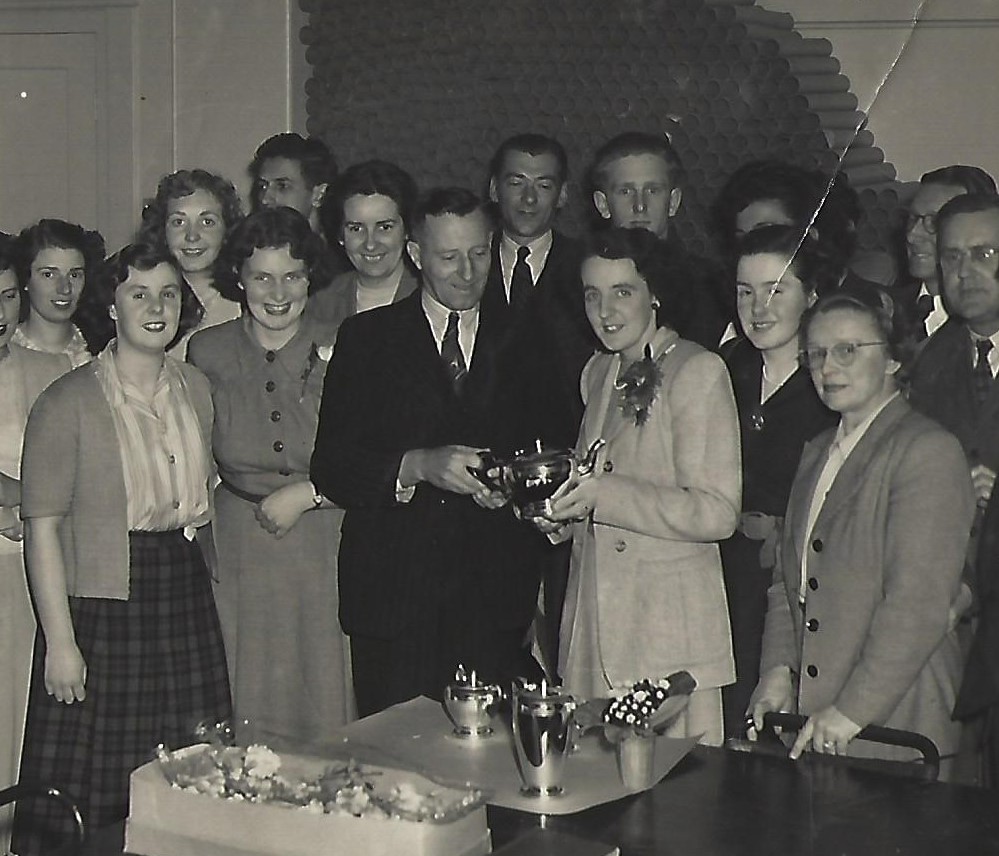
Leaving to get married 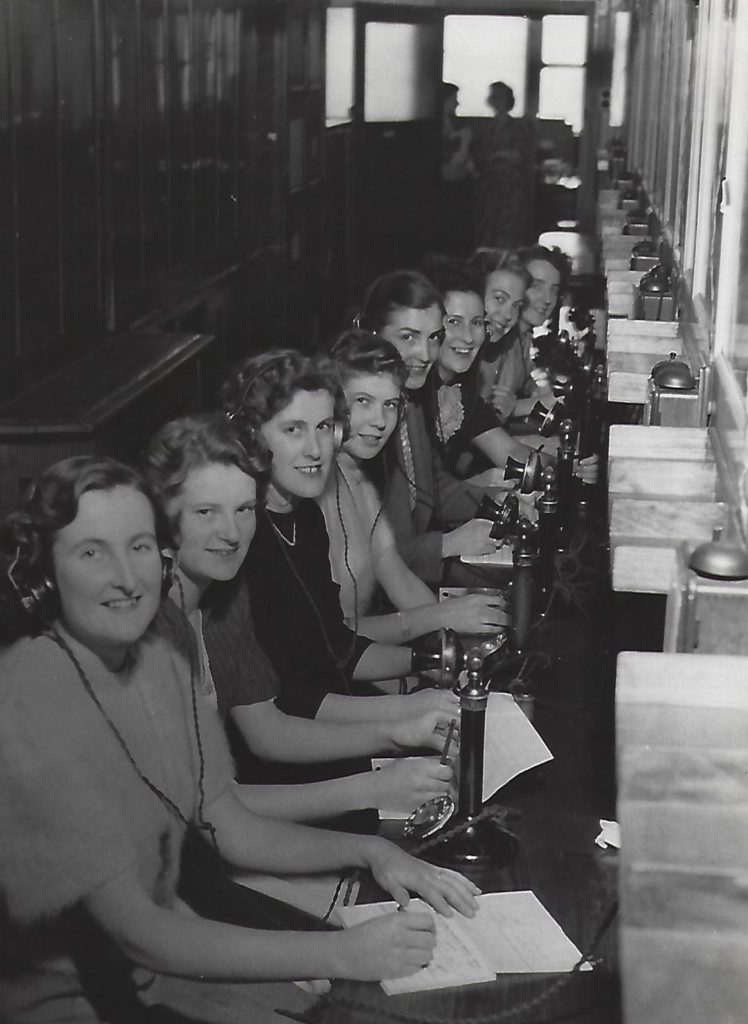
H&WT Switch 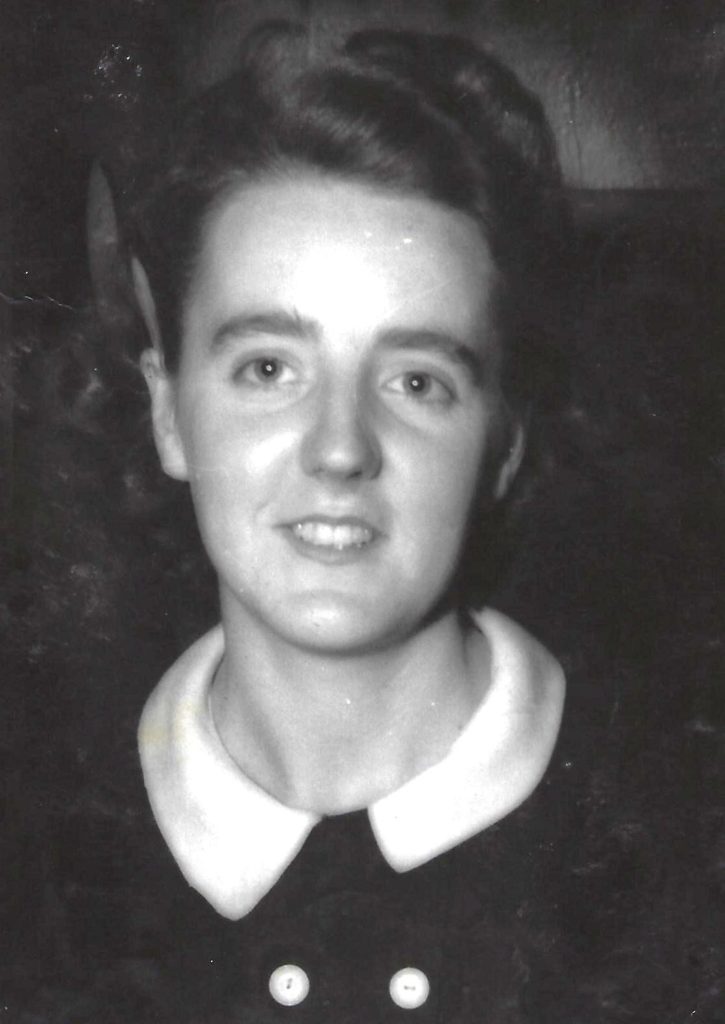
Teenage Beryl